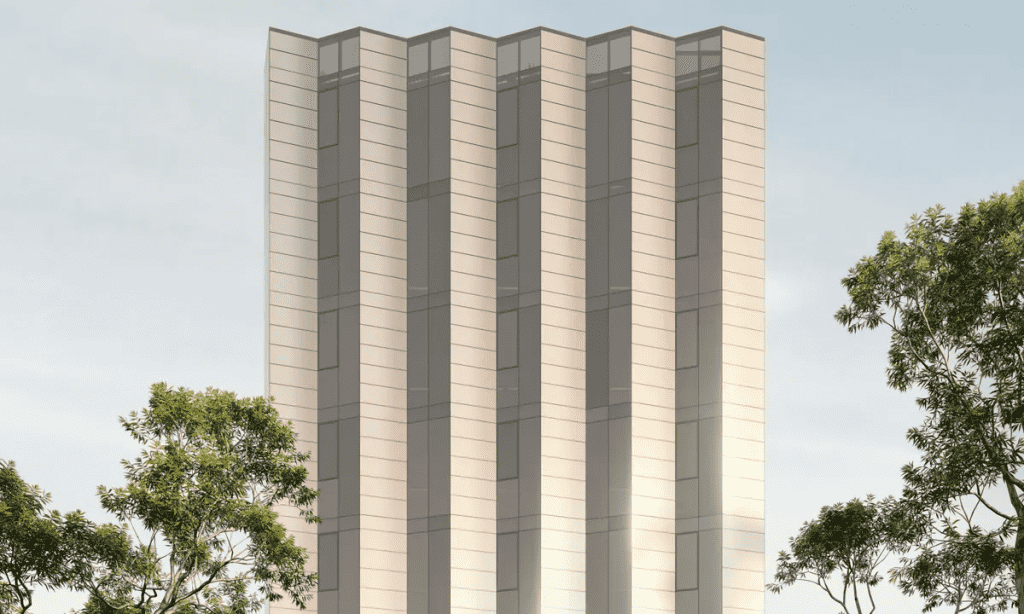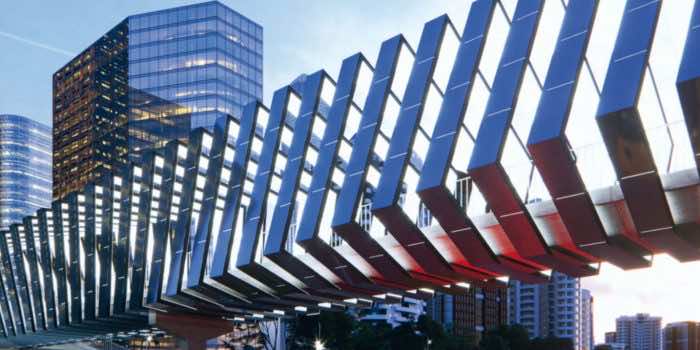Australia’s first office tower with a “solar skin” will be built next year in a landmark moment for the construction industry and decarbonization efforts.
The eight-story building at 550-558 Spencer Street in West Melbourne will cost $40m and is designed by the architecture firm Kennon on behalf of Dr. Bella Freeman. It will be covered by 1,182 solar panels.
The system – called Skala – is developed by the German company Avancis and depends on a “thin-film PV module” sitting over a network that channels the electricity generated into the building’s main power supply.

It can produce 50 times the energy of the average rooftop photovoltaic solar array used in residential housing. It will eradicate 70 tons of carbon dioxide emissions each year.
The system will provide enough power to cover the building’s energy needs. With more panels on the roof, the building will have almost no ongoing power costs and will be carbon-neutral after a few years.
The design beats out a similar project by the superannuation firm Cbus, which will be a 49-story office tower at 435 Bourke Street in the Melbourne CBD, expected to cost $1bn.
A solar panel facade will provide 20% of the building’s power when it will be done in 2026.
The building sector has 39% of CO2 emissions globally. According to the World Green Building Council, cement production contributes to 7% of all emissions globally, while steel production accounts for between 7% and 9% of emissions.
The architect, Pete Kennon, said the Spencer Street building would pay off its carbon debt and “actually be carbon neutral”, without relying on offsets and other accounting measures.
“These things are possible and the fact a building can harness the sunlight from its own skin – it sounds like something you dreamed of, or you saw in a cartoon,” Kennon said.

“Australia has one of the most, if not the most, strict building codes in the world,” he said. “And given all the recent history with flammable facades, it’s a – pardon the pun – very hot topic, so there’s a huge amount of due diligence that needs to go into proposing a product like this.”
The solar skin is undergoing a final round of testing before it can be approved, at which point the technology would be available for use in other buildings.
“We did not invent the product but we’ve invented the way it can come to our country, and our country is such an enormous market because of the access to sunlight,” Kennon said.
“I can’t believe it hasn’t been done already.”


